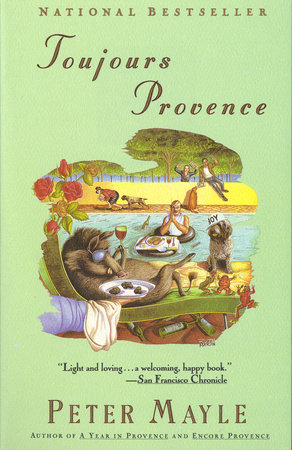Reading Group Center
- Home •
- Books by Category •
- Imprints •
- News •
- Videos •
- Media Center •
- Reading Group Center
Toujours Provence
By Peter Mayle
1. In "Boy," "Passing 50 Without Breaking the Speed Limit," and "Fashion and Sporting Notes from the Ménerbes Dog Show," Mayle offers affectionate portraits of his wife. Would you have liked to learn more about her? Do you think that as a woman she has a different perspective on life in Provence?
2. Why does Mayle create an air of mystery and suspense when he describes his two excursions to see Monsieur X, the truffle seller? Does the extreme secretiveness surrounding the buying and selling convey something more than the extraordinary value placed on truffles?
3. Why does Mayle find "the wise, venal, and congenitally crafted Massot" [p. 90] so appealing? How do Massot's peculiarities and his approach to life add an unexpected dimension to Mayle's portrait of Provence?
4. In "As Advertised in Vogue," Mayle mocks the Beautiful People who are discovering Provence. Are his criticisms legitimate? Can the "invasion" of outsiders bring benefits to Provence and to other rural areas without destroying the peace and beauty that make them so attractive?
5. Régis, the track suit-wearing gourmet, has definite theories about why France provides the best food and best eating experiences in the world [p. 166-7]. How do American eating habits and expectations compare to those of the French and the English? From your own experience, is it possible to find great, inexpensive restaurants in the United States? Do diners and small town restaurants fill the same role in this country as relais routiers do in France?
6. One of their visitors accuses the Mayles of "going native" [p. 231]. How do the vignettes in Toujours Provence differ from the stories in A Year in Provence? Do they reflect fundamental changes in Mayle and his way of thinking about life?


